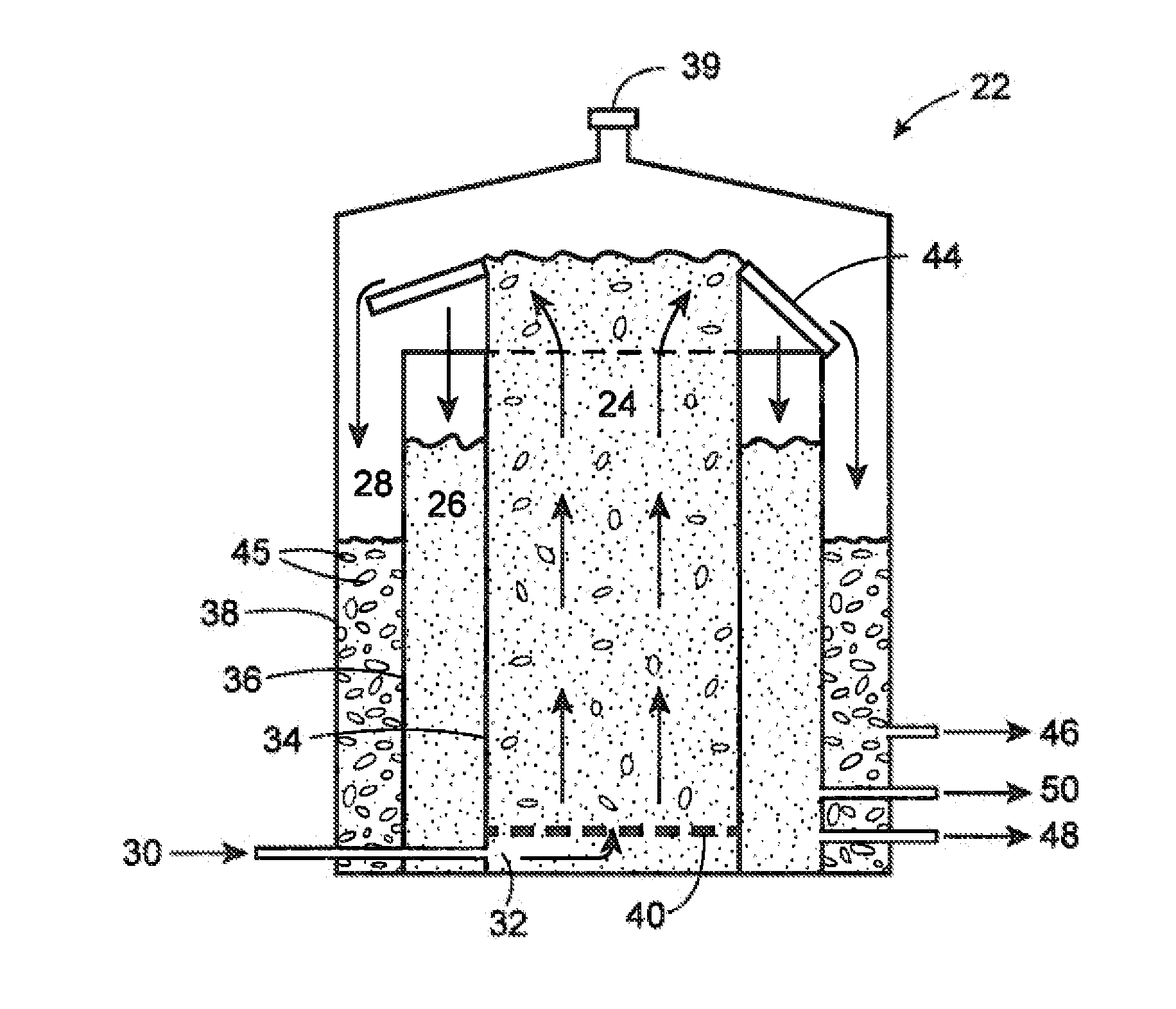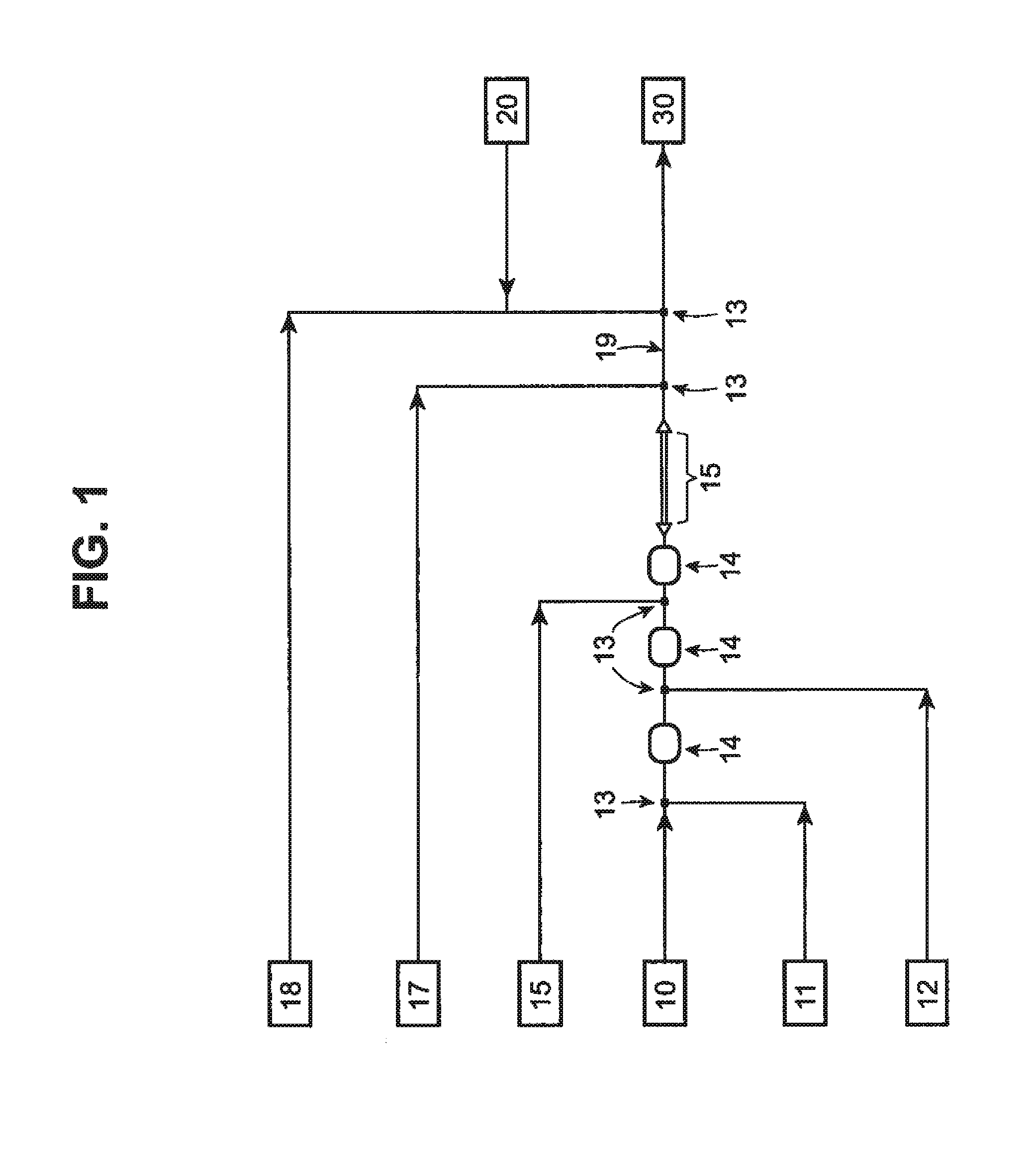Process for Reducing Soluble Organic Content in Produced Waters Associated with the Recovery of Oil and Gas
a technology of soluble organic content and produced water, which is applied in the nature of treatment water, multi-stage water/sewage treatment, waste water treatment from quaries, etc., can solve the problems of insufficient dimensioning criteria for practical deoiling methodology, inability to implement silica gel treatment to remove soluble organic compounds from produced water, and inability to reduce the turbulence of waste stream, reduce the turbulence of said aging step, and slow the velocity
- Summary
- Abstract
- Description
- Claims
- Application Information
AI Technical Summary
Benefits of technology
Problems solved by technology
Method used
Image
Examples
Embodiment Construction
[0038]A joint chemical and physical process that can be carried out in its entirety over an interval of several minutes, e.g. about 2 to 10 minutes, is described. Oily residuals and in particular the soluble organic compounds that are dissolved in produced waters during the oil / gas recovery processes are removed via the process, which is described briefly as follows.
[0039]The solubility of organic compounds in the produced waters may first be reduced by deliberate and controlled pH reduction of said waters. This step is followed by (or in some cases concomitant with or immediately preceded by) chemical treatment with coagulants, which is then followed by chemical treatment with flocculants in conjunction with microbubble flotation in a separation tank.
[0040]Such coagulation with or without pH adjustment is effective to de-emulsify oily droplets from the process water. Following one or more aging steps, as described further below, the flocculant then flocculates the de-emulsified oil...
PUM
| Property | Measurement | Unit |
|---|---|---|
| diameter | aaaaa | aaaaa |
| diameter | aaaaa | aaaaa |
| pressure | aaaaa | aaaaa |
Abstract
Description
Claims
Application Information
 Login to View More
Login to View More - R&D
- Intellectual Property
- Life Sciences
- Materials
- Tech Scout
- Unparalleled Data Quality
- Higher Quality Content
- 60% Fewer Hallucinations
Browse by: Latest US Patents, China's latest patents, Technical Efficacy Thesaurus, Application Domain, Technology Topic, Popular Technical Reports.
© 2025 PatSnap. All rights reserved.Legal|Privacy policy|Modern Slavery Act Transparency Statement|Sitemap|About US| Contact US: help@patsnap.com



